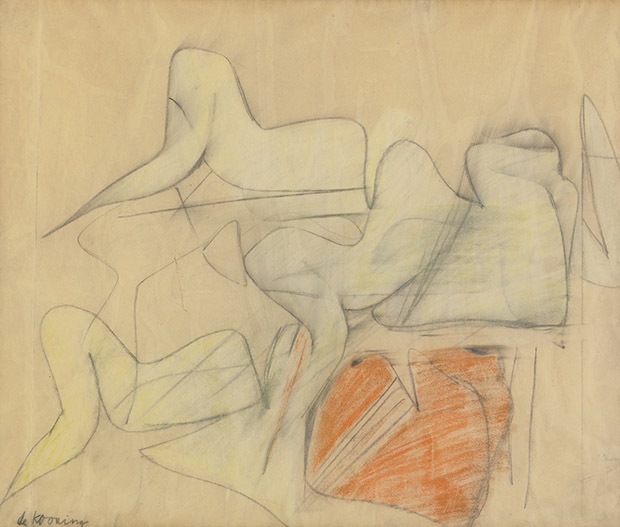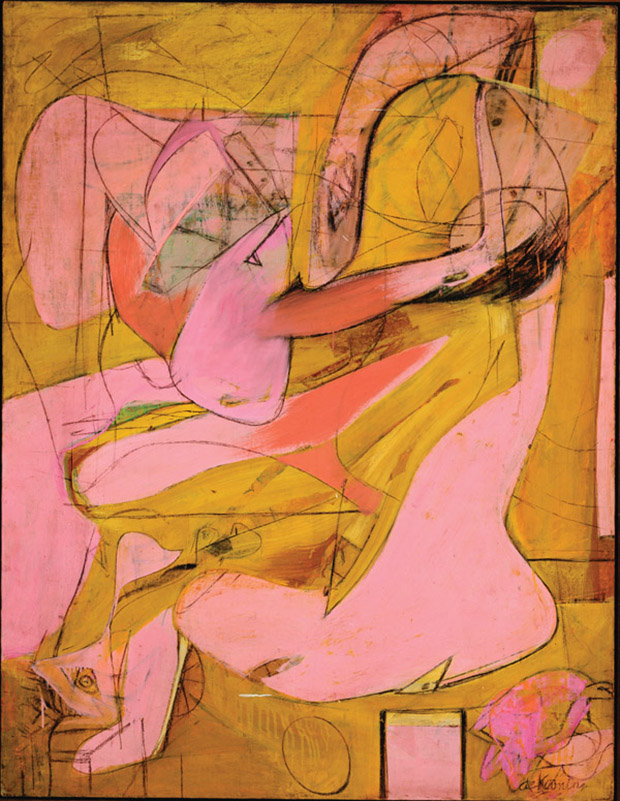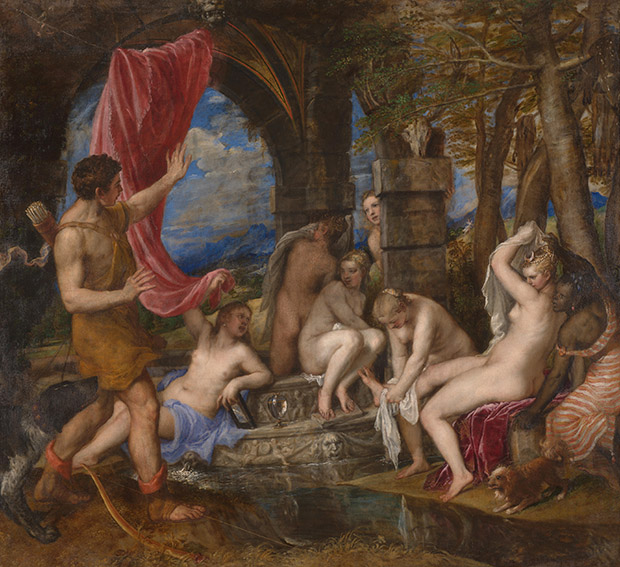
From Book to Bid - de Kooning's Pink Angels (study)
Renaissance allusion and sexual imagery abound in this study for a later masterwork on auction at Sotheby's
A study is a preparatory piece, often undertaken in advance of an ambitious piece. They often command a lower price, and are a good way of buying works by artists otherwise beyond the reach of all but the super rich.
Sotheby’s has just such a work listed in its Contemporary Art Day Auction, taking place in New York on 13 May. With an estimate of $350,000 — 450,000, it is hardly going to change hands for pennies. Then again, Willem de Kooning’s Study for Pink Angels is only one of four such works, undertaken in preparation for one of the Dutch-born, New York-based artist’s best-known paintings.
As historian and curator Judith Zilczer explains in our book A Way of Living: The Art of Willem de Kooning, Pink Angels was created immediately after WWII, at a point when de Kooning was vacillating between pure abstraction and priapic depictions of the female form.

“The growing dominance of such biomorphic figuration yielded a powerfully arresting rendition of female form in a more ambitiously scaled canvas known as Pink Angels,” writes Zilczer. “The painter transposed the explosive force of Pink Lady from his first series of ‘Woman’ paintings [1940-44] into an organically shifting matrix not unlike the rhythmic movements of such biomorphic abstractions as [earlier painting] The Wave. In Pink Angels, though, de Kooning has begun to use colour as an aggressive sexual sign. The high-keyed pink redolent of flesh may have echoed the seashell pink that de Kooning reportedly had used for the bedroom alcove he had built into his 22nd Street studio in preparation for his marriage to Elaine" (the landscape and portrait artist to whom deKooning was married for 43 years).

Yet, the piece isn’t a simple bedroom fantasy. Zilczer suggests there might be a Renaissance precedent for the figures in this study. “The compositional arrangement of fragmented body imagery conjures associations with more exalted European precedents,” she explains. “Scholar David Anfam has observed that the figures in Pink Angels appear akin to a close-up detail of the right section of Titian’s Diana and Actaeon. Such allusions to Old Master paintings, often based on photographic reproductions, continued a studio practice that de Kooning had developed in concert with his friends and mentors, Gorky and Graham. At the same time, the painter’s extensive use of charcoal over-drawing serves as much to probe as delineate the ambiguous bodily forms of Pink Angels.”
This Old Master reference is just as clear in this study as in the final painting, and so perhaps lends weight to this theory. Whatever the case, Study for Pink Angels remains a delightful work of pastel and graphite on vellum, as well as a key piece of art history. Care to bid? You can see this lot, no 115, here. Meanwhile, you can learn more about this important artist’s life and work in Zilczer’ s magisterial monograph, here.